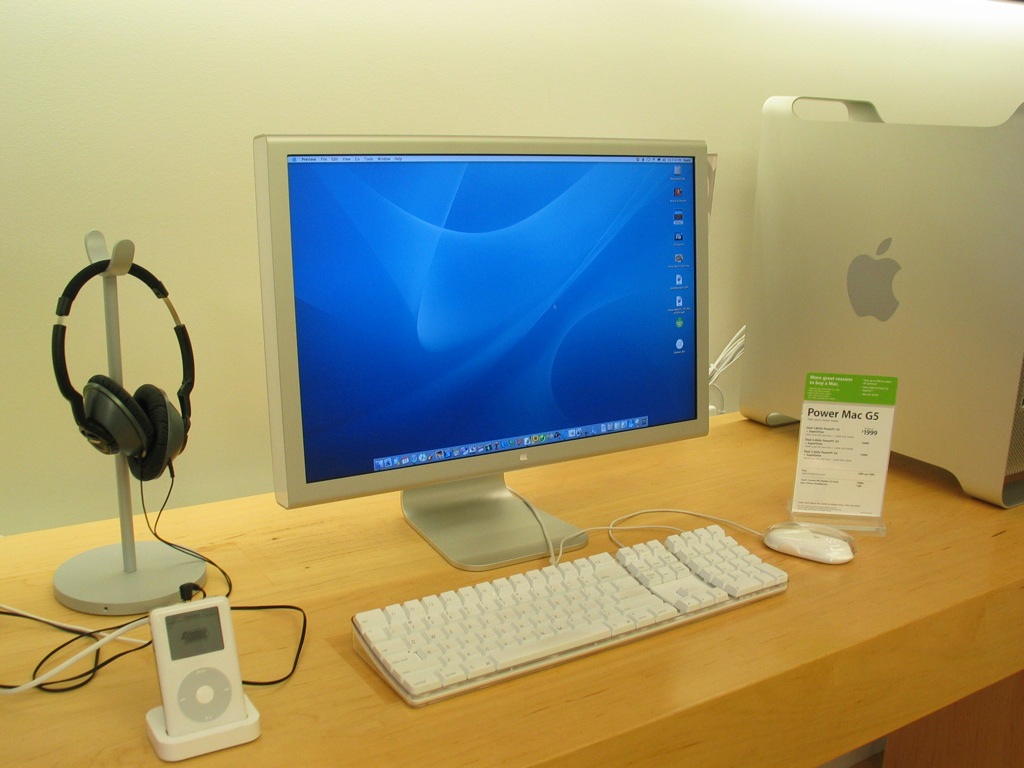When Apple began distributing its revolutionary LCD Cinema Display with a respectable twenty-two inch diagonal on December 22, 1999, it had - at least in terms of display dimensions - absolutely no competitor. Let's take a closer look at the Apple revolution in the field of LCD displays.
LCD displays, which were commonly available in retail stores at the end of the millennium, were diametrically different from Apple's new product. At the time, it was the very first wide-angle display produced by the Cupertino company with an interface for digital video.
The biggest, the best … and the most expensive
Aside from its size, shape and whopping $3999 price tag, another eye-catching aspect of the new Apple Cinema Display was its thin design. Nowadays, the "slimness" of products is something that we inherently associate with Apple, whether it's the iPhone, iPad or MacBook. At the time when the Cinema Display was released, however, Apple's obsession with thinness was not yet so apparent - the monitor looked all the more revolutionary.
"Apple's Cinema Display monitor is without a doubt the largest, most advanced and above all the most beautiful LCD display ever," said Apple CEO Steve Jobs in 1999 when the display was introduced. And at the time he was definitely right.
Not only the colors offered by the LCD Cinema Display were not comparable to those offered by its CRT predecessors. Cinema Display offered an aspect ratio of 16:9 and a resolution of 1600 x 1024. The main target audience for Cinema Display was graphics professionals and other creatives who were quite frustrated with Apple's lackluster offering so far.
Cinema Display was designed to work perfectly with the then high-end Power Mac G4 computer line. At that time, it offered higher graphics performance and other advanced functions, with which it aimed mainly at advanced users of apple products. The design of the first Cinema Display model, which resembled a painting easel, also referred to the fact that the monitor is primarily intended for creative work.
Steve Jobs introduced the Cinema Display at the end of the "One More Thing" Keynote:
https://youtu.be/AQz51K7RFmY?t=1h23m21s
The name Cinema Display, in turn, referred to another possible purpose of using the monitor, which was watching multimedia content. In 1999, Apple also launched i movie trailer website, where users could enjoy previews of upcoming images in high quality.
Goodbye CRT monitors
Apple continued to develop, produce and distribute CRT monitors until July 2006. Apple CRT monitors have been on sale since 1980, when the twelve-inch Monitor /// became part of the Apple III computer. Among others, the LCD iMac G4, nicknamed "iLamp", was at the beginning of a new era of displays. This all-in-one computer saw the light of day in January 2002 and boasted a flat fifteen-inch LCD monitor - from 2003, the iMac G4 was also available with a seventeen-inch version of the monitor.
Although LCD displays were significantly more expensive than their CRT predecessors, their use brought with them many advantages in the form of reduced power consumption, increased brightness and reduction of the flickering effect caused by the slow refresh rate of CRT displays.
Ten years and enough
The development and production of the revolutionary Cinema Display monitors took about a decade, but the monitors continued to be sold for some time after the end of production. Over time, there was a gradual increase in user requirements and simultaneous enlargement and improvement of monitors, the diagonal of which reached a respectable thirty inches. In 2008, Cinema displays received a major upgrade with the addition of a built-in iSight webcam. Apple discontinued the Cinema Display product line in 2011 when they were replaced by Thunderbolt Display monitors. They didn't stay on the market for nearly as long as their predecessors - they stopped being produced in June 2016.
However, the legacy of Cinema Display monitors is still very noticeable and can be observed with any of the iMacs. This popular all-in-one computer from the Apple workshop boasts a similar wide-angle flat display. Were you also one of the owners of the popular Cinema displays? How do you like the current offer from Apple in the field of monitors?


